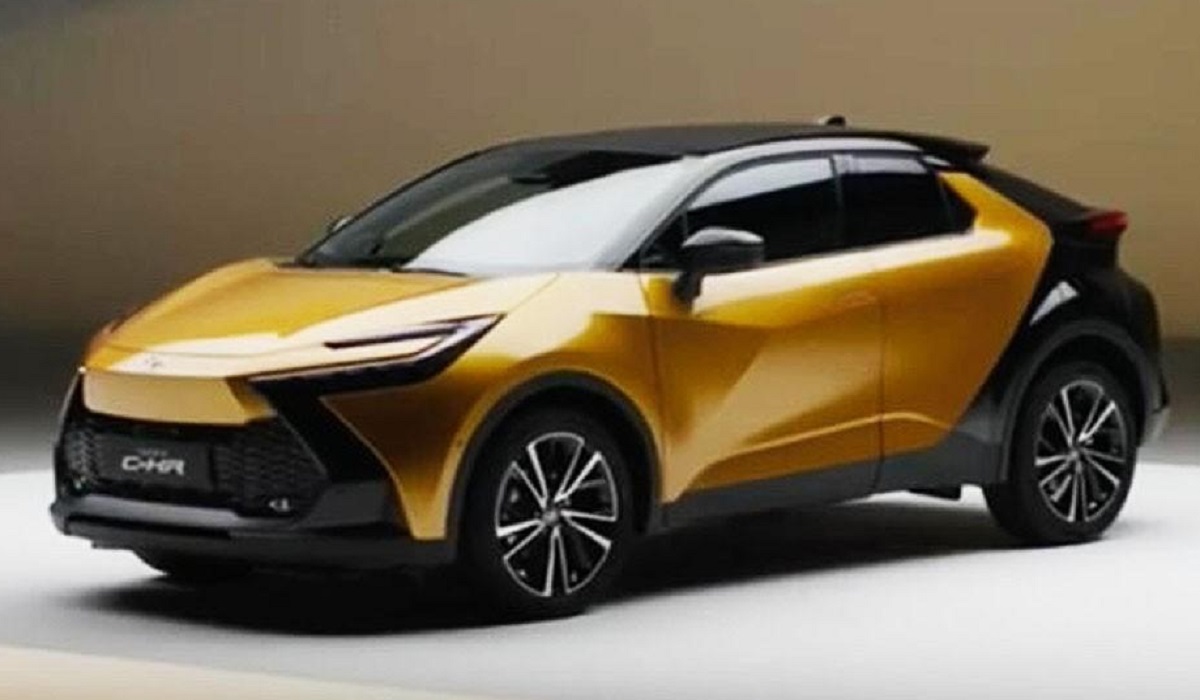The Toyota C-HR (short for “Coupe High-Rider”) is an exquisite subcompact crossover SUV designed by Toyota to blend style, performance, and innovative features into one sleek package. Unveiled initially as a concept car in 2016 before later going into production as a production model, its popularity among urban adventurers and young families looking for versatile yet eye-catching transportation has seen rapid growth over time. This article covers general information as well as technical specs as well as notable characteristics about this subcompact SUV from Japan.
1. A Sleek Exterior Design: The Toyota C-HR stands out from its peers with an extraordinary exterior design, boasting sharp lines, coupe-like roofline, and dynamic profile that sets it apart from conventional SUVs. It also stands out with a distinctive front grille, sleek LED headlights, and its distinctive boomerang taillights which contributes to its futuristic and eye-catching style on the road. No wonder people stop and stare when passing by a Toyota C-HR! It will surely draw admiring glances!
2. Compact and Nimble: As a subcompact crossover vehicle, the C-HR was created with maneuverability in mind; making it perfect for urban driving conditions or tight parking spots. Plus its small size still offers impressive amounts of interior room for passengers and cargo alike!
3. Powertrain and Performance: Underneath its sleek exterior lies an efficient yet energetic powertrain: In most markets, the Toyota C-HR comes equipped with either a 2.0-liter four-cylinder engine producing around 144 horsepower and 139 lb-ft of torque; depending on its region it may also come mated to either a Continuously Variable Transmission (CVT) or 6-speed manual gearbox delivering either continuous variable transmission (CVT). Though not designed specifically for high speed performance driving capabilities, its fuel efficient nature strikes an appropriate balance between fuel economy and urban driving capabilities.
4. Come inside the Toyota C-HR, and you’ll discover an interior designed around comfort and convenience. Premium materials, supportive seats, ample headroom/legroom for both front/rear passengers, plus its driver-centric dashboard place all controls within easy reach – creating an enjoyable driver-focused experience.
The C-HR comes equipped with innovative features, such as an intuitive touchscreen infotainment system equipped with smartphone integration and smartphone-user compatibility; Bluetooth connectivity; USB ports; as well as advanced safety technologies from Toyota such as its Safety Sense suite – featuring Pre-Collision System, Lane Departure Alert, Dynamic Radar Cruise Control and Automatic High Beams to increase driver confidence and ensure road safety.

5. Handling and Ride Quality: The Toyota C-HR’s suspension has been tuned for maximum comfort on uneven roads, providing an enjoyable driving experience even on bumpier routes. Plus its well-weighted steering and responsive handling makes navigating corners or city traffic enjoyable!
6. Toyota is well known for producing reliable vehicles, and the C-HR is no different – earning top safety ratings from independent crash test organizations to give occupants peace of mind on every drive. Furthermore, their commitment to quality and durability ensures it will continue to provide service long into the future.
The Toyota C-HR stands out in the competitive subcompact crossover SUV segment thanks to its distinctive design, comfortable interior, and advanced features. Its compact size and nimble performance are great choices for urban dwellers; while its innovative technology and safety features make it suitable for families on the move. Toyota prides themselves in creating vehicles that combine style, performance, and innovation–making this an appealing ride option that stands out.

What cars does the Toyota C-HR compete against?
The Toyota C-HR competes in the subcompact crossover SUV segment against several popular models such as:
1. Honda HR-V: Like its Toyota C-HR counterpart, the Honda HR-V offers spacious interior accommodations as well as versatile cargo space and comfortable ride quality – making it an effective contender in its segment.
2. Mazda CX-3: The Mazda CX-3 stands out among subcompact SUVs as having sporty handling and an attractive design, drawing young urban drivers who seek something fun-to-drive and stylish in subcompact SUV. Like its C-HR sibling, the CX-3 appeals particularly to young urbanites looking for an enjoyable subcompact vehicle to drive.
4. Nissan Kicks: The Nissan Kicks provides budget-minded car shoppers with an economical vehicle offering impressive fuel efficiency, user-friendly infotainment systems and design and feature comparison with C-HR.
5. Hyundai Kona: The Hyundai Kona offers multiple powertrain choices, including an energy efficient electric version. It stands out with an eye-catching exterior and generous list of available features; making it a worthy rival to C-HR.
6. Kia Soul: The Kia Soul boasts an eye-catching design with boxy proportions and distinctive lines, offering ample interior space and its own distinct character. Competing directly against C-HR in terms of both styling options and customization possibilities.
7. Subaru Crosstrek: Featuring off-road capabilities and standard all-wheel drive, the Subaru Crosstrek stands out as an attractive choice for outdoor enthusiasts looking for off-roading adventure. Competing against C-HR in terms of practicality and safety features.
8. Chevrolet Trax: The Chevrolet Trax provides an enjoyable drive, user-friendly infotainment features and competitive pricing; these characteristics put it on par with C-HR in terms of overall value and utility.
9. Ford EcoSport: The Ford EcoSport offers compact design, responsive handling and all-wheel drive system as standard features – and stands up against its counterpart, the C-HR in terms of technology and versatility.

Note that competitiveness among these models varies based on regional markets and individual tastes, as potential buyers of subcompact crossover SUVs must assess their unique needs and desires when choosing their ideal vehicle for this category.
